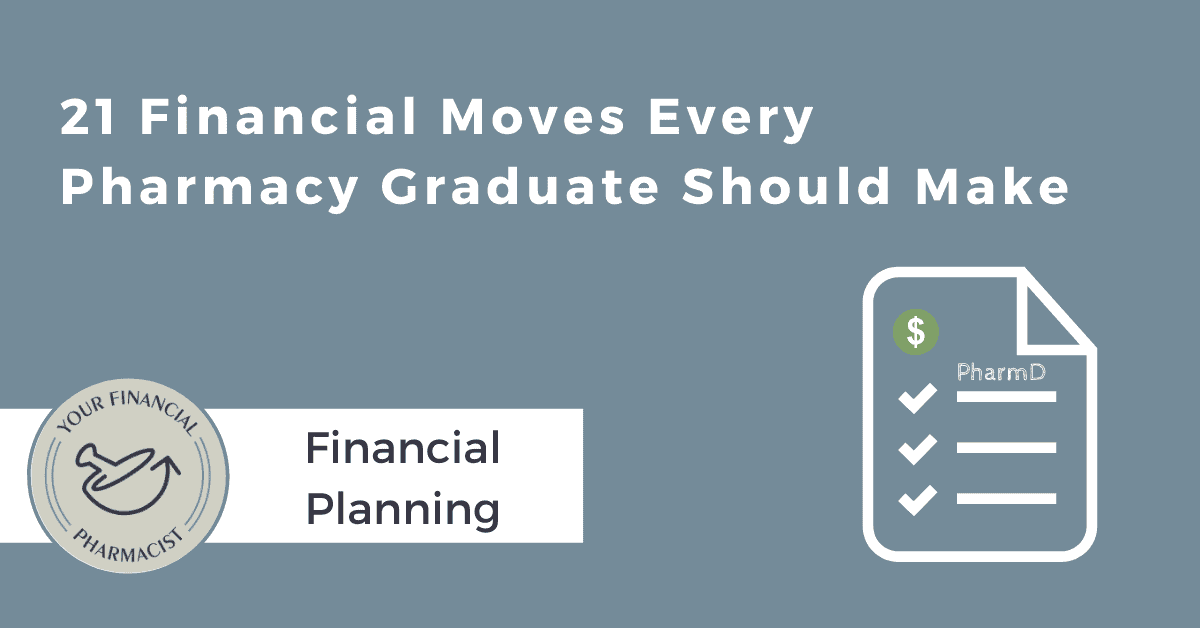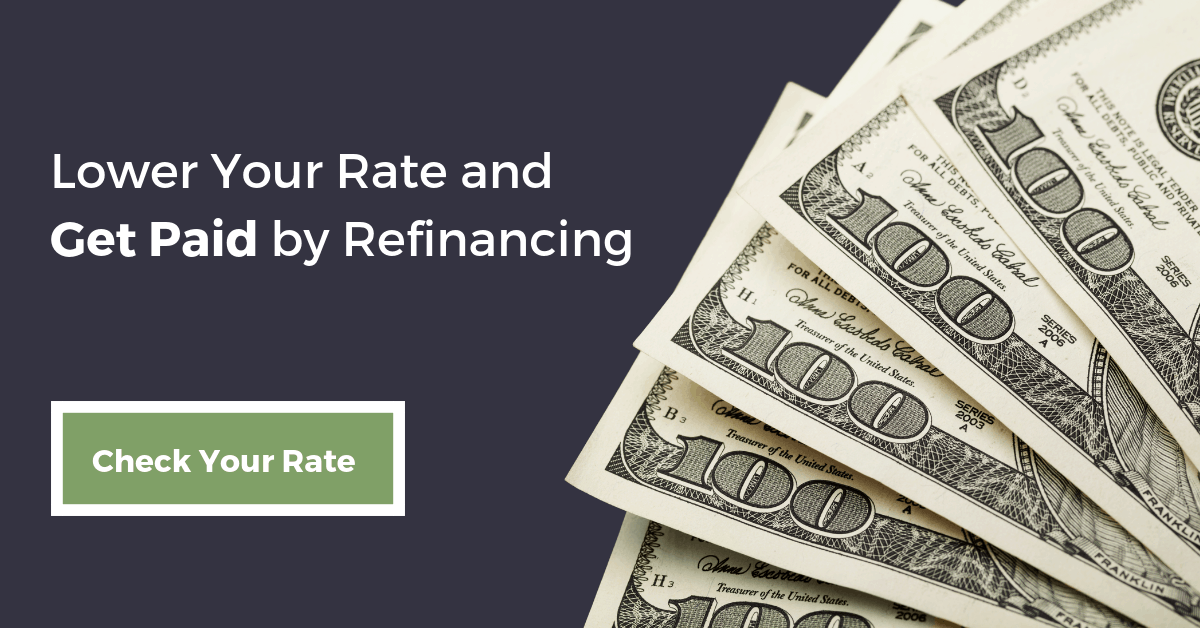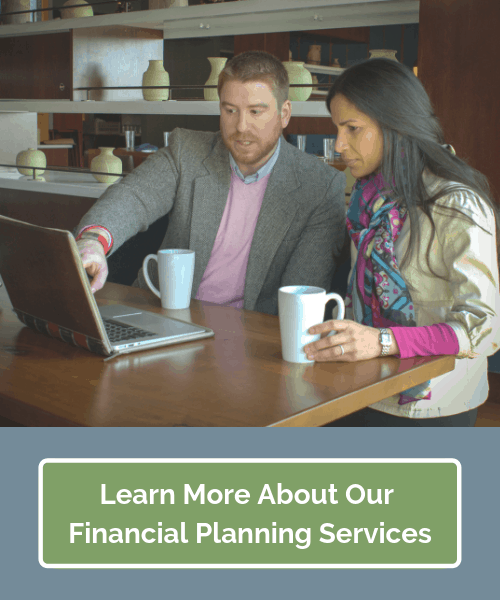The following post contains affiliate links through which YFP receives compensation.
It took me about a year and a half after graduating from pharmacy school to finally start making good decisions to improve my financial situation. I had some bad spending habits, very little personal finance knowledge, and wasn’t taught good financial principles growing up. This resulted in some unfortunate financial mistakes early in my career.
Most pharmacy schools don’t have mandatory personal finance education, some offer elective courses, and some provide some basic information before you graduate. Therefore, it will largely be up to you to be proactive in making sure have a financial game plan.
Check out these 20 moves that every pharmacy graduate should make to get a good start.
Depending on your personal situation, you may not be able to work on all of these at once. The key is to get them on your radar so you can develop a good foundation.
1. Create Solid Financial Goals
When I graduated from pharmacy school, my main goal was to survive an intense residency program. I fully admit, I wasn’t thinking very much about my finances and I hadn’t set any goals. Looking back, this should have been a priority.
Consider having specific, measurable, and timely goals that have a strong purpose behind them and lay out the steps you are going to take to accomplish. I recommend that you actually write your goals down and tell your friends as research shows these additional steps can increase your rate of success. Here is the basic framework you can use:
By <date to achieve goal>, I want to <financial goal you want to achieve> so that <why you want to achieve the goal>. To accomplish this, I will <steps you will take to make the goal become a reality>.
Example
By December 31st, 2018, I will save $5,000 for an emergency fund so that I can avoid the stress and anxiety when an unexpected expense occurs.
Consider having goals around these areas: savings, net worth, debt payoff, and giving.
2. Develop a Budget
Many people associate a budget with living frugally, eating ramen, and shopping at thrift stores. The truth is that a budget is just a game plan on how you will spend your money and execute your goals. You plan for your expenses in advance and then direct your disposable income (or money left over after expenses) toward your financial goals.
Personally, having created and stuck to a unique budget every month for the past several years has helped prevent overspending, given me a sense of peace, and also kept me on track to achieve my goals. If you want an easy four-step process, check out our free budgeting template to get started. After getting your budget set up, consider using one of the budgeting software/apps to track your progress each month. Some of the popular ones out there include Mint, YNAB, Mvelopes, and Everydollar.
3. Set up an Emergency Fund
If you’ve never had an unexpected car, medical expense, or another emergency, it’s only a matter of time. Life happens and you better be prepared. Having a good chunk of cash on hand can mitigate emergencies that have the potential to derail your financial plan.
The textbook answer is to have 3-6 months of expenses saved in a liquid account like a simple savings account or money market account. Ally bank has a great rate of up to 1.00% APY (Annual Percentage Yield) for their savings account which is significantly higher than what most banks offer. The CIT Bank Savings Builder is another option for a high yield savings account that currently offers an APY of up to 0.75% and requires a minimum deposit of $100. There are no fees to open or maintain the account, however, to get the maximum APY you have to either maintain a balance of $25,000 or more or make monthly contributions of $100 or more.
Some argue that this is too much money to be earning interest rates that can’t even beat inflation. Find an amount you are comfortable with and one that allows you to reduce your dependency on a credit card to bail you out.
4. Eliminate Your Credit Card Debt
No one ever plans to go into credit card debt. It’s often the result of either overspending or unexpected medical events or emergencies. Having credit card debt is really a financial emergency in and of itself given the typical ridiculously high interest rates.
If you’re in this situation, you should make it a priority to get rid of it as soon as possible. You want to take advantage of compound interest and not have it work against you. Do you need an emergency fund in place? Would a budget help prevent you from overspending? Find a strategy that will help prevent it from recurring in the future.
5. Calculate and Track Your Net Worth
This is a quick way to analyze your financial health. Your net worth is your assets (things you own) minus your liabilities (debt you owe). As a new pharmacy graduate, this is likely going to be a large negative number thanks to student loans. However, don’t let that discourage you!
The goal is to make strides to increase your net worth by building your assets and paying off debt. The trajectory is more important than the actual current number. With apps like Mint or Personal Capital, you can quickly check your net worth if you have all of your accounts synced. Tim Baker CERTIFIED FINANCIAL PLANNER™ on the YFP team also has a great net worth tool that’s easy to use.
6. Get Long Term Disability Insurance
You put in a lot of time, energy, and effort to be able to become a pharmacist and make a good income. That’s why it’s so important to protect it. Disability insurance for pharmacists is really income insurance. It provides you with money in the event that you become disabled and are unable to work. Personally, I have known pharmacists that have been unfortunately out of work for months to years because of head trauma and autoimmune diseases. What would happen if you were suddenly unable to work because of an accident or illness? How would you support yourself or your family?
Compared to other types of insurance, long-term disability insurance for pharmacists can be more expensive depending on your health status and coverage options. But can you afford not to have it? You may have a policy through your employer but many times they are not as robust a private policy and may not offer own occupation coverage.
You can learn more by checking out our disability insurance page. When you are ready to shop around for a policy, check out Policygenius, an online broker we recommend where you can quickly shop multiple reputable companies to find coverage that’s right for you. They have a very user-friendly interface and offer incredible service.
7. Develop a Student Loan Payoff Strategy
86% of pharmacy graduates borrowed money to pay for school and the average student loan debt is now over $160,000. With debt loads continuing to rise and salaries being somewhat stagnant compared to inflation, you need a solid strategy to tackle your student loans.
If you’re lucky enough to work for a company or institution that offers a tuition reimbursement/repayment program, this should be your first strategy to consider. There are some well-known federal programs offered by the government and military and some state programs, too. Beyond these, your options are to pursue loan forgiveness through the Public Service Loan Forgiveness Program or forgiveness after 20-25 years or to pay them off in full.
If you’re not pursuing forgiveness and don’t need an income-driven repayment plan, a great option can be to refinance student loans. Reducing your overall interest rate by 1% could result in thousands in savings. You can even get a nice bonus up to $800 through one of our partner companies. If you need help finding the best strategy, you can take our free student loan quiz or download our Quick Start Guide.
8. Start investing in your company’s 401(k), 403(b), or TSP
When you’re flooded with student loans and other debt, it can be hard to balance other goals such as investing. While you may feel you can put off retirement savings for a few years, the reality is that you want to take advantage of compound interest, and the earlier you start contributing, the better.
Many companies offer a match program where they will put in a dollar amount equal to your contribution up to a certain percentage, such as 5%. This is essentially “free” money. For most people, taking the match is going to be the best play, even while paying off student loans. Beyond the match, how much you contribute to your retirement savings plan depends on your financial goals.
9. Get Liability Insurance
Even as a highly trained professional, mistakes can happen which could jeopardize your license and even your career. If you work for an employer, they likely offer some protection if you’re functioning within your scope of practice. However, their main concern is protecting the organization, not you.
Besides actual damages, liability or malpractice insurance can help cover litigation costs, costs for representation for the board of pharmacy hearings, and lost wages. Coverage is relatively inexpensive (~$12-$20/month). Proliability, Pharmacist Mutual, and HPSO offer policies for pharmacists up to $1 million in liability coverage per incident and a $3 million aggregate limit.
10. Get Term Life Insurance
Not everyone needs life insurance, but, if you have a family that depends on your income or someone would be responsible for your debt if you pass, you should have a policy in place. There are two major types of life insurance: term life insurance and permanent. Term is the way to go for most people because it’s less expensive and not flooded with fees.
The amount of coverage required will depend on your needs including existing debt, income support, and future expenses. Future expenses include things like funeral costs, childcare, and college tuition. Check out Episode 44 of the YFP podcast for more information on figuring out your life insurance needs. You can get a free quote in two minutes through Policygenius without putting in your personal information.
11. Set up a Health Savings Account (HSA)
If your employer offers a high deductible health plan (HDHP), then you’re eligible to contribute to an HSA. This can be a good option, especially if you’re relatively healthy and rarely use health insurance because your premiums will generally be lower than traditional plans.
An HSA allows you to save money pre-tax into an account designated for health expenses. But, here is the best part, it doesn’t have to stay in a savings account. The money can be invested aggressively just like an IRA. Furthermore, these accounts grow tax-free and distributions can be taken tax-free if used for qualified medical expenses.
However, you don’t have to use the money for medical expenses that occurred in the same year. You can reimburse yourself for medical expenses that you paid out of pocket in previous years. For 2019, you can contribute up to $3,500 per year if single and $7,000 if married or have dependents.
12. Start Contributing to an IRA
Like a 401(k) or 403(b), an IRA or Individual Retirement Arrangement is another great way to save for retirement in a tax-efficient manner. This is something you set up on your own outside of your employer through a mutual fund company or brokerage firms such as Vanguard or iShare.
While your investment selection will vary based on your personal situation, consider using low-cost index funds or exchange-traded funds (ETFs). You can do this completely on your own or use a robo advisor where portfolio options are already established and your asset allocation is automatically rebalanced.
Meeting with a financial planner to help you choose investments and your overall portfolio is another great option. You can set up a free discovery call with YFP Director of Business Development, Justin Woods, PharmD, MBA to learn about how YFP Planning can support your investment strategy.
You have the option to contribute to a traditional IRA, Roth IRA, or a combination of both. Contributions to a traditional IRA can lower your taxable income, but you likely won’t be able to take advantage of that benefit if your adjusted gross income is $63,000 if single and $101,000 if married filing jointly.
Although you may not be able to contribute to a Roth IRA directly because of income limits, you can contribute to a traditional IRA and convert to a Roth (known as backdoor Roth IRA). Any gains prior to the conversion will be taxed. For 2020, the contribution limit is $6,000 per year.
13. Get a Will in Place
This is probably one of the last things on most people’s financial to-do lists but it’s something you don’t want to overlook. Having a will in place will ensure your property goes to whoever you decide, give you the ability to name an executor who will enforce your will, and to name a guardian for your children if this applies. If you die without a will in place, this will be decided by probate court according to your state’s laws and regulations.
Along with a will, you want to have a living will which is also called a health care declaration or an advanced directive. This outlines how you would receive medical care and who you want to make decisions in the event that you are incapacitated. Depending on how complex your estate is, you may want to hire an attorney to help. Otherwise, you can download state-specific estate documents for free or at a very low cost from many sites.
14. Get Clarity on How to Get Raises or Promotions
Your raises will typically be based on time worked, merit, or a combination of both. If you can increase your salary through achievements, do you know exactly what those are? Some organizations will give raises if you obtain board certifications or other medical credentials.
What about publications, presentations, or positions within state and national pharmacy organizations? If you are already doing things to promote and advance your career, knowledge, and experience, you should definitely take advantage of the financial benefits if available.
15. Set Your Withholdings to Break Even
When you first start working for an organization, you will fill out an IRS W-4 form. This tells your employer how much in federal taxes to withhold on your paycheck and is designated by a number.
The lower the number, the more money they withhold. To maximize your net pay every month without owing a tax bill, you will need to determine the optimal withholding based on your projected income and deductions. If your taxes are relatively easy, you can figure this out using the IRS Withholding Calculator. Otherwise, consider seeking the help of an accountant. You can adjust your withholdings multiple times throughout the year if needed.
16. Consider Hiring a Financial Planner
Having a good financial planner on your team can help you achieve your goals, manage your investments, and put together a comprehensive plan. Beyond the financial benefits, a planner can give you peace of mind knowing someone is looking out for you. The key is finding someone you can trust that has your best interest in mind.
While there are many types of financial planners and advisors out there, consider a Certified Financial Planner (CFP®). They have the most rigorous education requirements including thousands of hours of experience. Be sure they do comprehensive financial planning and not just investment management (unless that’s all you’re interested in). The team at YFP Planning works virtually with pharmacy professionals across the country for one-on-one fee-only, certified financial planning. You can set up a free discovery call to see if YFP Planning is a good fit for you.
17. Start Educating Yourself
Before graduating from pharmacy school, I received about two hours of financial information. Since I didn’t make it a priority to learn about money while in school and didn’t have any good examples to follow, I had a very weak foundation. That resulted in some big mistakes in my first year and a half as a practicing pharmacist.
You don’t need a master’s degree in finance to be successful with money, but you should have the basic knowledge that helps you make good decisions and develop good habits. Some of the YFP team’s favorites include Money: Master the Game and Unshakeable by Tony Robbins, and The Millionaire Next Door by Tom Stanley. If you want more education that is focused on pharmacists, check out our book Seven Figure Pharmacist: How to Maximize Your Income, Eliminate Debt, and Create Wealth and the YFP Podcast.
18. Consider a Side Hustle
Side hustles are ways to make extra cash beyond your full-time job. This could be moonlighting at another pharmacy or hospital or could be something completely outside of your training. Having an additional stream of income can help you achieve your goals faster and reduce the risk of relying solely on your main job.
If you want some ideas, check out this post 19 Ways to Make Extra Money as a Pharmacist in 2020. You can also check out the podcast as we frequently have pharmacists on the show who talk about side hustles they started.
19. Set up Systems to Avoid Lifestyle Creep
Lifestyle creep is one of the biggest threats to a pharmacy graduate. This is when your expenses meet or exceed your income no matter how much you earn. With incomes starting out high, there is a tendency to get comfortable and maintain a certain lifestyle.
Spending the majority of your money on things that bring you pleasure and happiness today and the need to compare yourself to those around you are the main contributors to lifestyle creep. So you have to protect yourself from yourself. Many pharmacists have recommended, “living like a student” for the first few years following graduation. This is a great way to avoid upgrading your lifestyle and making large purchases too quickly.
Another strategy is to automate your contributions toward savings and investments so you never “see” certain money. If you can divert a percentage of income before it hits your checking account, you won’t be able to spend it. Increasing your savings in step with your raises is another great way to prevent lifestyle creep.
20. Connect with the Your Financial Pharmacist Facebook Group
Surrounding yourself with people on the same journey is a great way to help you achieve your goals. We have some great discussions on the Facebook group and you can post your own questions at any time. Join over 7,000 pharmacists and students for some extra motivation and inspiration by clicking here.
21. Use a high-yield savings account or money market account for big purchases
When you consider inflation, money sitting in regular checking or savings accounts can lose a lot of purchasing power over time given most interest rates are essentially next to nothing.
Sure you avoid market risk or the risk of keeping cash in other investments but there are other options that are less risky and can yield at least some return. These include high yield savings accounts and money market accounts.
If you are sitting on a bunch of cash that’s for an emergency or you are saving for a big purchase such as a car or home within 5 years or less, these can be good options to earn a little extra money. Now if your savings amount is relatively low and you aren’t adding anything to it then it may not be anything substantial, but remember it’s better than 0.001%.
I did a review of my experience with CIT Bank which offers competitive interest rates from 0.85-1.40% for their high yield savings and money market accounts.
Financial Planning for Pharmacists
While these are some great tips to get you started on your journey, everyone has a unique situation. Whether you want to pay off your student loans, make the right investment decisions, or simply build a solid financial plan, YFP Planning can help you get your income working for you (rather than the other way around). YFP Planning offers fee-only financial planning for pharmacists. You can book a free discovery call to learn more!
Current Student Loan Refinance Offers
Note: Referral fees from affiliate links in this table are sent to the non-profit YFP Gives. | Bonus | Starting Rates | About | YFP Gives accepts advertising compensation from companies that appear on this site, which impacts the location and order in which brands (and/or their products) are presented, and also impacts the score that is assigned to it. Company lists on this page DO NOT imply endorsement. We do not feature all providers on the market. |
$750* Loans ≥150K = $750* ≥50K-150k = $300 | Fixed: 4.89%+ APR (with autopay) | A marketplace that compares multiple lenders that are credit unions and local banks | ||
$500* Loans ≥50K = $500 | Variable: 4.99%+ (with autopay)* Fixed: 4.96%+ (with autopay)** Read rates and terms at SplashFinancial.com | Splash is a marketplace with loans available from an exclusive network of credit unions and banks as well as U-Fi, Laurenl Road, and PenFed |









